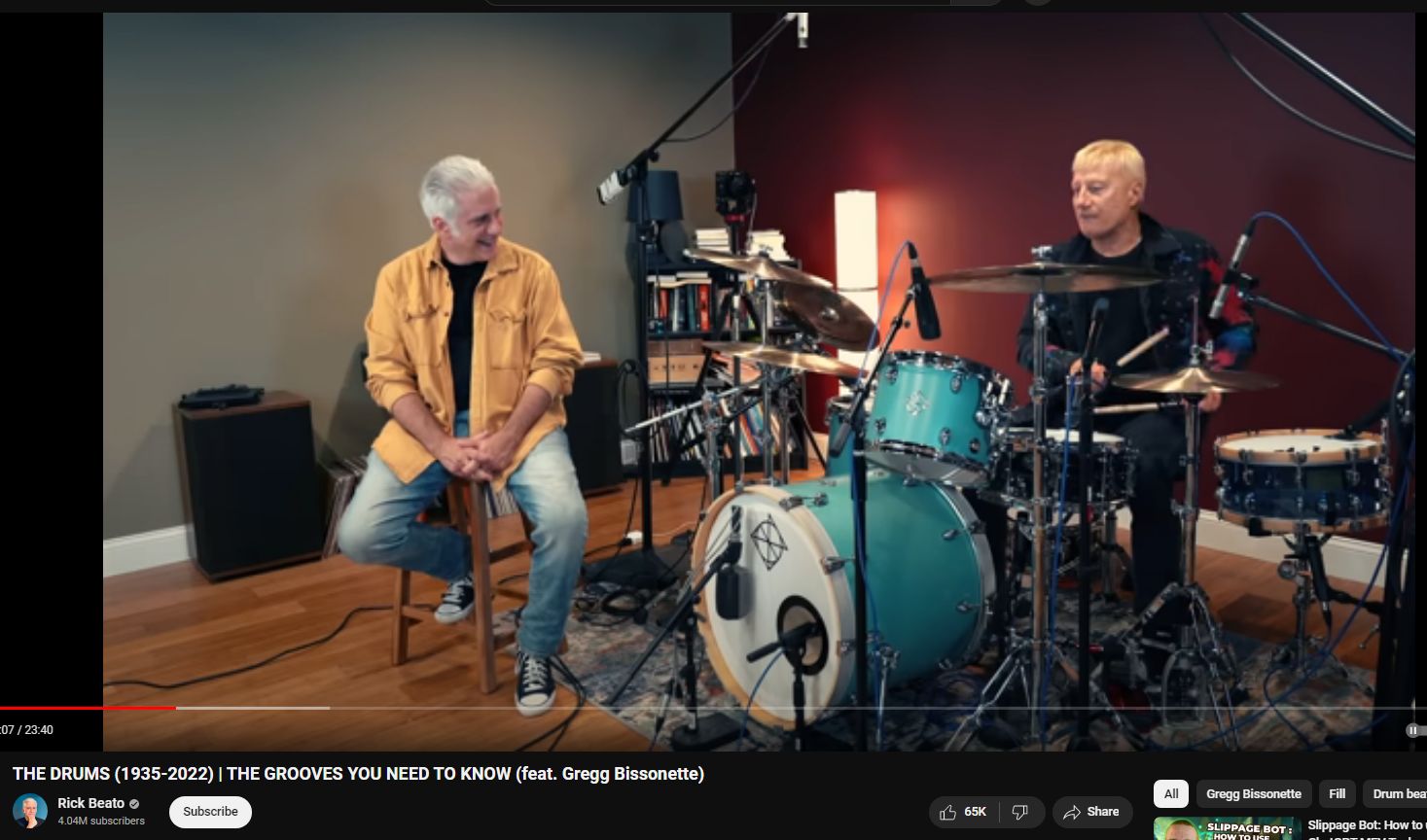Must-Know Drum Grooves w/ Greg Bissonette / Rick Beato
THE DRUMS (1935-2022) | THE GROOVES YOU NEED TO KNOW (feat. Gregg Bissonette)
https://www.youtube.com/watch?v=UwWcMAxOLP

Drum rhythms and grooves are the heartbeat of music, providing the foundation for songs across various genres and styles. From rock and jazz to funk and Latin music, drummers play a vital role in shaping the feel and energy of a piece. In this blog post, we’ll explore must-know drum rhythms and grooves that every drummer should be familiar with, along with their characteristics and applications in different musical contexts.
1. Four-on-the-Floor Beat
The four-on-the-floor beat is a foundational rhythm commonly used in dance music genres like disco, house, and EDM. It features a kick drum on every beat (1, 2, 3, 4), providing a steady and driving pulse that keeps listeners moving on the dance floor. This beat is characterized by its simplicity and effectiveness in creating a strong groove for dancers to follow.
2. Funky Backbeat Groove
Funk music is known for its tight and syncopated rhythms, and the funky backbeat groove is a prime example. It emphasizes the backbeat (snare drum on beats 2 and 4) while incorporating ghost notes, syncopated accents, and off-beat hi-hat patterns. This groove adds a funky and infectious feel to the music, inviting listeners to groove along with the rhythm section.
3. Shuffle Groove
The shuffle groove is a classic rhythm found in blues, jazz, and rock music. It is characterized by its swing feel, where eighth notes are played in a triplet subdivision (1-and-a, 2-and-a, 3-and-a, 4-and-a). The hi-hat or ride cymbal plays the swung eighth notes, while the snare drum and bass drum create a bouncing and swinging feel. The shuffle groove adds a laid-back and bluesy vibe to songs, making it essential for drummers across various genres.
4. Samba Rhythm
Originating from Brazil, the samba rhythm is a lively and energetic groove used in samba, bossa nova, and Latin jazz music. It features a syncopated pattern with accents on the off-beats, creating a rhythmic propulsion that is both intricate and danceable. The bass drum, snare drum, and hi-hat work together to drive the samba rhythm, making it a must-know groove for drummers interested in Latin and world music styles.
5. Rock Drum Beat
The rock drum beat is a fundamental rhythm used in rock, pop, and alternative music. It typically features a steady backbeat (snare drum on beats 2 and 4), with the bass drum providing a driving pulse on beats 1 and 3. The hi-hat or ride cymbal plays steady eighth notes or quarter notes, maintaining the rhythm’s momentum and energy. This beat is versatile and adaptable, making it essential for drummers in various contemporary music genres.
6. Reggae One-Drop Groove
The reggae one-drop groove is a signature rhythm in reggae music, known for its relaxed and laid-back feel. It features the bass drum playing on beat 3 (the “one-drop”), while the snare drum emphasizes beats 2 and 4. The hi-hat or ride cymbal plays a steady pattern, often incorporating syncopated accents and ghost notes. The reggae one-drop groove creates a deep pocket and rhythmic flow that defines the reggae genre’s distinctive sound.
Conclusion
Mastering these must-know drum rhythms and grooves opens up a world of possibilities for drummers, allowing them to create solid foundations, dynamic feels, and expressive textures in their playing. Whether you’re playing in a band, recording in the studio, or jamming with friends, understanding these essential rhythms enhances your musicality and ability to connect with other musicians. Keep practicing, experimenting, and exploring new rhythms to expand your drumming vocabulary and musical horizons.